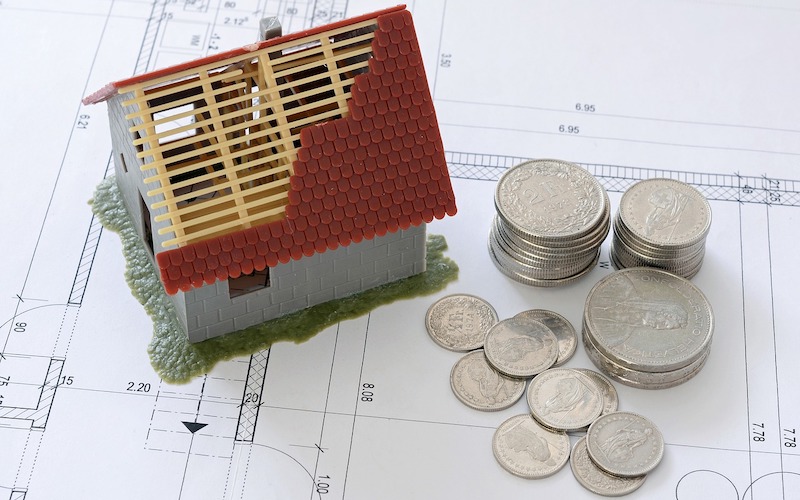Clients often ask me, “Will home technology increase my property value?” I usually cringe at the thought of responding. It’s a question our industry has been long afraid to answer. So much so that we generally avoid the return on investment (ROI) conversation altogether.
We’ve done it to ourselves over the years with bad products, poor installation quality, and lousy service after the sale. In an effort to change things up a bit, our company recently began addressing ROI in our pre-sale conversations through the eyes of the client.
One of my mentors is fond of saying, “We sell things everyone wants and nobody needs.” He always gets a laugh from the crowd, but it’s unsettling each time I hear it. Are we truly wanted and not needed? I don’t think so. My own home has systems in it that are simultaneously loved and loathed by my family. The remote control that magically makes all the components work together seamlessly one moment but runs out of batteries the next. The printer that performs tirelessly day after day but never seems to work properly when needed by my wife. They each have their place and provide some measure of safety, security, comfort, or convenience.
Each one was carefully selected and installed with the express purpose of making our lives easier somehow. Were my selections made qualitatively or quantitatively? What drove me to invest in home technology? What sort of return am I getting? Just like everything else in our industry, the answer is the same: it depends.
I decided to look at each of the systems installed throughout my home and Livewire’s Design Center to find out.
Safety & Security
Security Systems
Professionally monitored security systems are very popular with clients who place a high premium on peace of mind. We never try to convince anyone to invest in physical security if they don’t express an interest. The selection process tends to be polarized, with clients expressing strong convictions one way or the other. Just like politics and religion in mixed company, we don’t argue the point; rather, we mirror our conversations to match their preferences. We see a high level of engagement and low service call rates with our security system business. In other words, clients tend to be very happy with their investment.
Payback: 5- to 20-percent discount off homeowner’s insurance annual premiums and peace of mind.
Illustration: A $5,000 insurance premium discounted $1,000 annually against an initial installed system investment of $2,000 breaks even in two years and more than pays for the monitoring (assuming $50 average monthly monitoring subscription) after that.
Outdoor Lighting
We’ve found deterring crime by removing opportunity is one of the best ways to deliver peace of mind. A well-lit exterior does exactly that and serves to heighten the aesthetics of the home in the bargain. We seldom see clients evaluating outdoor lighting based on financial payback and wondered if we could increase sales by better communicating ROI.
Payback: Peace of mind and beautification. Real estate news resources like Inman claim up to a 50 percent ROI with a professionally installed outdoor lighting system.
Illustration: Outdoor lighting systems average $300-$500 per installed fixture. Assuming 10 fixtures installed with a total of $3,000-$5,000 invested, homeowners can expect to recoup $1,500-$2,500 in resale value.
Comfort & Convenience
Heating & Cooling Control
Smart thermostats are nothing new, but we don’t talk enough about energy saving as a means of justifying the investment. In my own home, I’ve seen a 20 percent decrease in heating and cooling bills since installing smart thermostats a few years ago.
Payback: Even using conservative assumptions, the payback period is less than three years based on the energy savings. There are a ton of great resources like a well-written perspective by The Flannel Guy ROI available online, which back up these claims.
Illustration: Smart thermostats average $250-$400 installed. Assuming an average climate and 3,000-square-foot home size, energy savings amount to $250 annually in energy costs. Depending on the number of thermostats in the home, payback can easily happen in less than two years.
Lighting Control
I feel like this category has the highest benefit and lowest market penetration of any home technology system out there. The current Compounded Annual Growth Rate (CAGR) of the entire industry is around 18 percent, and it is projected to continue at this pace well into the 2020s. Since the average price per light switch ranges between $100-$450, lighting control has yet to reach mass market adoption. With more LED fixtures coming into the market with intelligent lighting controls built into them (like Lutron’s EcoSystem), we’re seeing the commercial market adopt lighting control at a much faster rate than residential.
Payback: The U.S. General Services Administration (GSA) reports independently verified energy savings of 54 percent with lighting controls and 78 percent when combined with LED fixtures in commercial environments. Those numbers are impressive and resonate with facilities managers evaluating new building decisions. Residential payback can be calculated based on the use of dimmers, timers, photoelectric sensors, and occupancy sensors. The single biggest impact on residential energy savings is the use of dimmers in a family or living room, according to a recent study by the Consortium for Energy Efficiency.
Illustration: Assuming 10 controlled lights at $200 per switch installed, an investment of $2,000 saves an average of 150 kilowatt hours (kWh) per year. Based on an average electricity price of $0.12 per kWh, that’s $18 saved annually – a payback of 111 years for the average home. Clearly our industry has some work to do before we can start using hard numbers as the only means of justifying a home lighting control system, whereas the commercial world is ready now, seeing paybacks between three and six years. On the home side, we have qualitative ROI in the form of convenience and the elimination of switch clutter. It’s hard to go back to manually turning off lights once a client experiences the bliss of automating routine lighting tasks like turning off the lights at bedtime or pathway lighting to the kitchen in the morning.
Control Systems
These solutions highlight the biggest gaps between expectations and experience. Thanks to a steady diet of Hollywood movies, clients already expect home control systems to be intelligent, self-healing, and anticipatory. Current offerings are none of the above. That said, once we set client expectations, ROI can be expressed mainly through efficiency. When each sub-system in the home is able to talk to the others, it’s possible to save minutes each day, which can add up over the course of the year into many hours. Depending on how our clients view their time, control systems can be seen as tremendously valuable if we can demonstrate how the system makes daily life easier.
Payback: When we add up the time it takes to manually interact with light switches, thermostats, door locks, garage door openers, security systems, and entertainment systems each day, we can easily demonstrate ROI by equating time savings against an average hourly rate.
Illustration: Assuming we can automate lighting, HVAC, and some basic entertainment options, we’re conservatively saving the client 15 minutes each day. If our bills to our clients value time at $100 hourly, we’re saving $25 daily, $175 weekly, $700 monthly, and $8,400 annually. Since most of our clients view time as their most valuable resource, we’re hoping this perspective will resonate well.
I’m encouraging our sales team to start using ROI as a means to justify investing in home technology. Armed with some quick facts about total cost of ownership and the associated payback periods will go a long way to helping us guide clients through their technology selection process.









